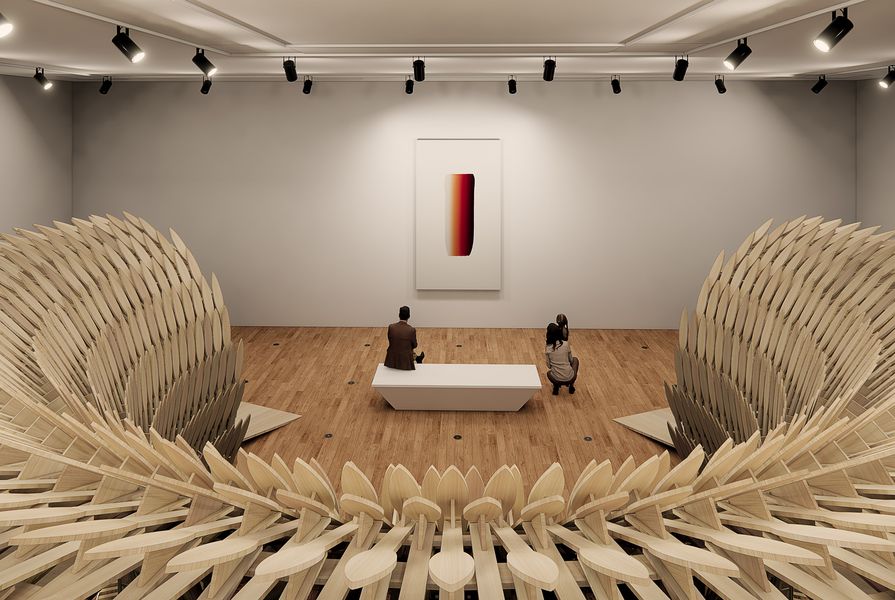Japanese architect Kengo Kuma and Australian artist Geoffrey Nees will create an architectural pavilion at the National Gallery of Victoria, as part of the gallery’s second triennial exhibition.
The triennial will include 86 major projects, 34 of which will be major works commissioned by the NGV. The exhibition will feature more than 100 artists, designers and collectives from more than 30 countries.
Kuma and Nees’s timber pavilion will be built using a traditional Japanese technique where interlocking pieces are held together only by tension and gravity.
The interior of the pavilion will feature a tessellated pattern formed of timber pieces harvested from trees that died during the millennium drought at Melbourne’s Royal Botanic Gardens, some of which pre-dated colonial occupation of Australia.
The pavilion’s design responds to a new acquisition for the gallery, Dialogue by South Korean artist Lee Ufan. It is intended to act as a contemplative, sensorial walkway through which visitors would approach the painting.
The triennial exhibition will be divided into four themes: illumination, reflection, conservation, speculation, and the works will explore issues of isolation, representation and race, and speculation of the future.
“The NGV Triennial offers visitors a significant opportunity to explore how we use art to express ourselves, communicate and consider the world as it is, while also asking how we would like it to be,” said NGV director Tony Ellwood. “Artists, designers and architects of the twenty-first century perform a vital role in giving form to our collective imagination, fears and aspirations. We are all living in a world in flux: there has never been a more important moment to celebrate human capability than now.”
Boudoir Babylon by Adam Nathanial Furman and Sibling Architecture.
Image: courtesy of the architects
Other new commissions include the transformation of the NGV Gallery Kitchen by English architect Adam Nathaniel Furman and Australian studio Sibling Architecture. The project will draw on influences from the boudoir, the salon and the nightclub to create a space with “flamboyant scenography and décor.” It is intended to be an inclusive space that is “especially welcoming to those who may not feel comfortable or safe in the public realm.”
A 15-minute animated short film by Australian born architect Liam Young will depict an alternative urban future in which the world’s population lives densely together as an antidote to the climate crisis.
Plant City (still) by Liam Young.
Image: Liam Young
And Spanish architect and designer Patricia Urquiola will create her first major furniture installation in Australia, to be located in the NGV’s Great Hall. Recycled Woollen Island will feature a series of large, long ottomans in the form of whimsical giant socks, made with upcycled textile furnishings and handcrafted. The installation is intended to encourage visitors to take their shoes off and lie down to gaze at the famous ceiling in the Great Hall by Leonard French.
The 2020 triennial is the second instalment of the major exhibition. The inaugural edition in 2017 was the most-attended exhibition in the NGV’s history, attracting 1.23 million visitors.
The triennial will be free to visitors and will be open from 19 December 2020 until 18 April 2021.





















